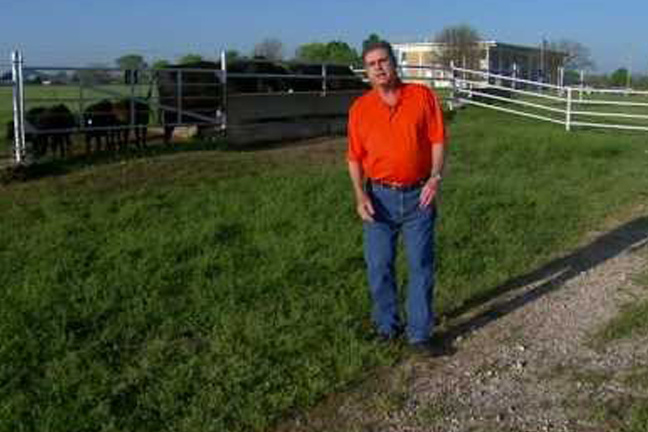
Agricultural News
OSU's Glenn Selk Says Timing Is Everything When It Comes to Colostrum for Baby Calves
Tue, 12 Jan 2016 11:28:15 CST
 Glenn Selk, Oklahoma State University Emeritus Extension Animal Scientist, writes in the latest Cow-Calf Newsletter.
Glenn Selk, Oklahoma State University Emeritus Extension Animal Scientist, writes in the latest Cow-Calf Newsletter.
Producers should provide high risk baby calves (born to thin first calf heifers or calves that endured a difficult birth) at least 2 quarts of fresh or thawed colostrum within the first 6 hours of life and another 2 quarts within another 12 hours. If actual colostrum is unavailable a commercial colostrum replacer should be administered. This is especially important for those baby calves too weak to nurse naturally. Calves born after a long difficult delivery will often be sluggish and slow to get up. Plus they may have respiratory acidosis which will further impair the ability of the calf to absorb the large proteins (antibodies or immunoglobulins).
Timing of colostrum feeding is important because the absorption of immunoglobulins from colostrum decreases rapidly from birth. "Intestinal closure" occurs because specialized absorptive cells are sloughed from the gut epithelium. The very large molecules (immunoglobulins) are no longer absorbed by the intestine and therefore are not released into the circulation. In calves, "closure" is virtually complete 24 hours after birth. Efficiency of absorption declines steadily from birth. In research trials, at 6 hours of age 66% of ingested immunoglobulins were absorbed. At 12 hours of age only 47% immunoglobulin absorption occurred. Feeding may induce earlier closure, but there is little colostral absorption after 24 hours of age, even if the calf is starved. This principle of "timing of colostrum feeding" holds true whether the colostrum is consumed directly from the first milk of the dam or supplied by hand.
Thaw frozen colostrum very slowly in warm water so as to not allow it to overheat. A microwave oven can be used only if it is set on low power and the frozen colostrum is very slowly thawed. A slow thaw means denaturation of the protein does not occur. If at all possible, feed the calf natural colostrum first, before feeding commercial colostrum substitutes. Remember, the first feeding of milk or colostrum will induce faster intestinal closure.
WebReadyTM Powered by WireReady® NSI
Top Agricultural News
More Headlines...





